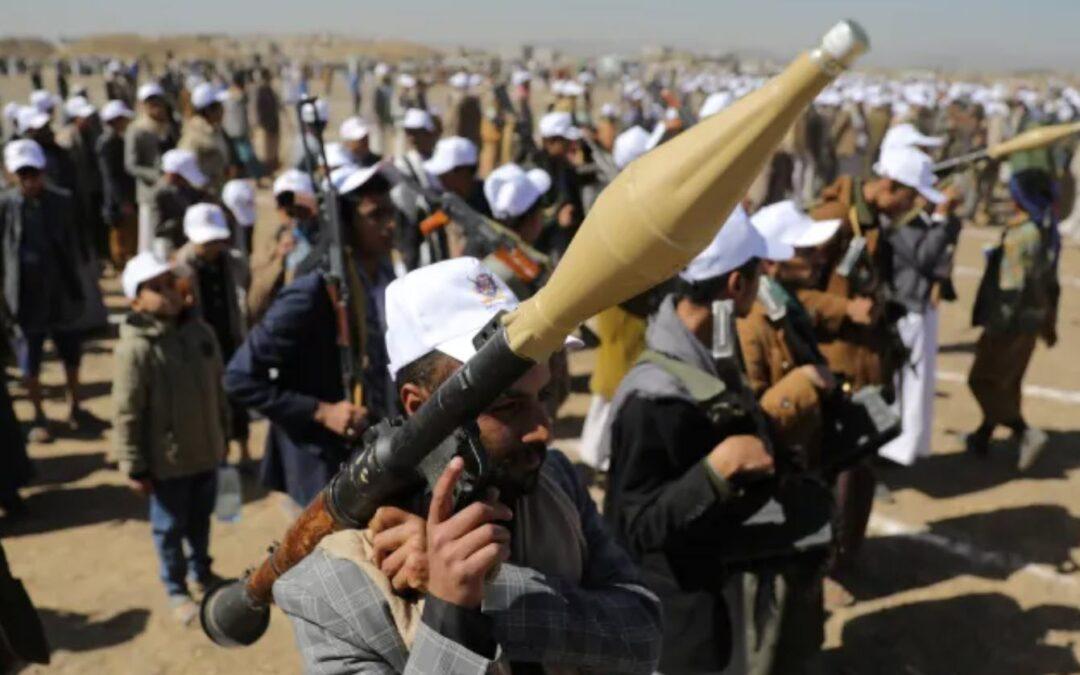By PAUL WISEMAN and MAE ANDERSON AP Business Writers
WASHINGTON (AP) — Car factories have idled in Belgium and Germany. Spring fashion lines are delayed at a popular British department store. A Maryland company that makes hospital supplies doesn’t know when to expect parts from Asia.
Attacks on ships in the Red Sea are delivering another shock to global trade, coming on top of pandemic-related logjams at ports and Russia’s invasion of Ukraine.
Houthi rebels in Yemen, seeking to stop Israel’s offensive against Hamas in Gaza, are attacking cargo ships plying the waters connecting Asia with Europe and the United States, forcing traffic away from the Suez Canal and around the tip of Africa. The disruption is causing delays and driving up costs — at a time when the world has yet to vanquish a resurgence of inflation.
“What’s happened right now is short-term chaos, and chaos leads to increased costs,” said Ryan Petersen, CEO of the supply chain management company Flexport. “Every ship that gets rerouted has 10,000 containers on it. It’s a lot of emails and phone calls getting made to replan each of those container journeys.”
Adding to the bedlam in global shipping is what Petersen calls a “double whammy”: Passage through another crucial trade corridor — the Panama Canal — is restricted by low water levels caused by drought. And shippers are in a rush to move goods before Chinese factories shut down for the Feb. 10-17 Lunar New Year holiday.
The threat grows considerably the longer the war in Gaza drags on. Disruption to Red Sea trade lasting a year could surge goods inflation by up to 2%, Petersen says, piling on pain while the world already struggles with higher prices for groceries, rent and more. That also could mean even higher interest rates, which have weakened economies.
For now, Man & Machine in Greater Landover, Maryland, is awaiting a shipment from Taiwan and greater China. It’s been one setback after another for the company, which makes washable keyboards and accessories for hospitals and other customers.
Founder and CEO Clifton Broumand usually gets a shipment of components about once a month, but the latest delivery, which departed Asia four weeks ago, is delayed. The normal route — three weeks via the Suez Canal — has been shut down by the Houthi attacks.
Rerouting to the Panama Canal didn’t work either — the shipment was stymied there by the drought-related mess. Now, it might have to cross the Pacific to Los Angeles and come by truck or train to Maryland. Broumand has no idea when the products will arrive.
“It’s annoying, and it’s interesting. I think our customers, everybody understands. This is not like, ‘Why didn’t you plan this?’ — who knew?” he said. “We call our customers and say, ‘Hey, it’s going to be delayed. This is why it is.’ Nobody likes it, but it’s not going to kill anybody, it’s just another frustration.”
Other industries are seeing similar hassles.
Electric carmaker Tesla has to shut down its factory near Berlin from Monday to Feb. 11 because of shipment delays. The Chinese-owned Swedish car brand Volvo idled its assembly line in Ghent, Belgium, where it makes station wagons and SUVs, for three days this month while waiting for a key part for transmissions.
Production at a Suzuki Motor Corp. plant in Hungary stopped for a week because of a delay in getting engines and other parts from Japan.
The British retail chain Marks & Spencer warned that the turmoil would delay new spring clothing and home goods collections that were due in February and March. Chief executive Stuart Machin said the Red Sea trouble was “impacting everyone and something we’re very focused on.”
Roughly 20% of the clothes and shoes imported into the U.S. arrive via the Suez Canal, said Steve Lamar, CEO of the American Apparel & Footwear Association. For Europe, the impact is even bigger: 40% of clothes and 50% of shoes traverse the Red Sea.
“This is a crisis that has global implications for the maritime shipping industry,” Lamar said.
As of Jan. 19, Flexport says, almost 25% of global shipping capacity is being or will be diverted from the Red Sea, adding thousands of miles and a week or two to trips.
The cost of shipping a standard 40-foot container from Asia to northern Europe has surged from less than $1,500 in mid-December to nearly $5,500. Getting Asian cargoes to the Mediterranean is even costlier: almost $6,800, up from $2,400 in mid-December, according to the freight booking platform Freightos.
But things could be worse. At the height of supply chain backups two years ago, it cost $15,000 to ship a container from Asia to northern Europe and nearly $14,200 to take one from Asia to the Mediterranean.
“In terms of supply chain disruptions, we’re not even close to what was happening during the pandemic,” said Katheryn Russ, a University of California, Davis, economist.
In 2021 and 2022, American consumers, stir-crazy from COVID-19 lockdowns and armed with government relief checks, went on a spending spree, ordering furniture, sports equipment and other goods. Their orders overwhelmed factories, ports and freight yards, leading to delays, shortages and higher prices.
Things are different now. After that supply chain mess, shipping companies expanded their fleets. They have more ships to cope with shocks.
“The market is in a state of overcapacity,” said Judah Levine, Freightos’ head of research, “which happens to be a good thing. There should be enough capacity to accommodate this disruption.”
Global demand also has cooled off — partly because the U.S. Federal Reserve and other central banks have raised interest rates to combat inflation and partly because China’s powerhouse economy is sputtering. Inflation has come down over the past year and a half, though it’s still higher than central banks would like.
“There are really big forces bringing down inflation,” said Russ, who was a White House economic adviser in the Obama administration. “It’s hard to see (the Red Sea disruption) would substantially muck up the declines in inflation that we’ve been seeing beyond a tenth of a percentage point here and there.”
Many companies say they have yet to see meaningful impact. Retailer Target, for instance, said most of its products don’t pass through the Suez Canal and was “confident in our ability to get guests the products they want and need.”
BMW said: “All lights are green… our factory supplies are secure.” Norwegian fertilizer giant Yara said it was “only mildly impacted by the transit challenges in the Red Sea.”
Carlos Tavares, CEO of automaker Stellantis, has said: “So far, it’s OK. Things are moving well.”
The respite may not last. If shippers avoid the Suez Canal for a year, Flexport CEO Petersen warned, “it’s a really big deal.” The higher costs would lead to “goods inflation of 1 to 2%.”
Jan Hoffmann, a U.N. shipping expert, warned Thursday that Red Sea shipping snags posed a risk to global food security by slowing the distribution of grain to parts of Africa and Asia, which depend on wheat from Europe and the Black Sea area.
It would be even worse if the Middle East conflict widens and drives up oil prices, which are now lower than they were the day before Hamas attacked Israel on Oct. 7.
For now, companies are muddling through.
Retailer Urban Outfitters’ Free People subsidiary imports clothing from India and is shipping “a lot of that through air,” co-president Frank Conforti said at an investors’ conference this month. But it’s too costly to put furniture and household goods on planes.
At least home goods aren’t as “fashion-sensitive” as clothing, Conforti said, so losing 15 days “sailing down the tip of Africa isn’t the end of the world.”







